Duke Energy 2012 Annual Report Download - page 8
Download and view the complete annual report
Please find page 8 of the 2012 Duke Energy annual report below. You can navigate through the pages in the report by either clicking on the pages listed below, or by using the keyword search tool below to find specific information within the annual report.-
 1
1 -
 2
2 -
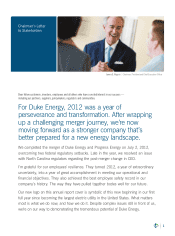 3
3 -
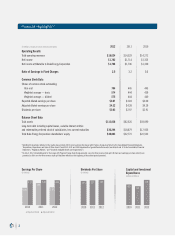 4
4 -
 5
5 -
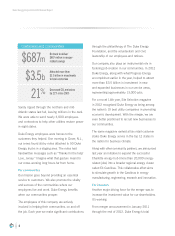 6
6 -
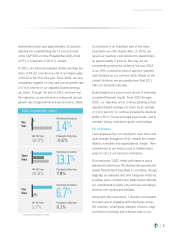 7
7 -
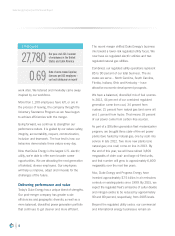 8
8 -
 9
9 -
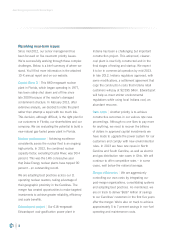 10
10 -
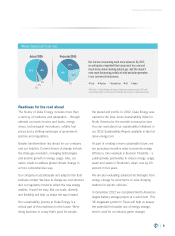 11
11 -
 12
12 -
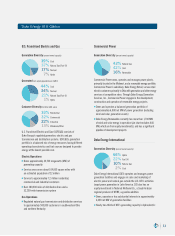 13
13 -
 14
14 -
 15
15 -
 16
16 -
 17
17 -
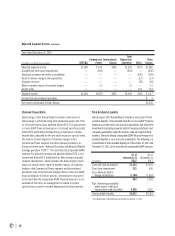 18
18 -
 19
19 -
 20
20 -
 21
21 -
 22
22 -
 23
23 -
 24
24 -
 25
25 -
 26
26 -
 27
27 -
 28
28 -
 29
29 -
 30
30 -
 31
31 -
 32
32 -
 33
33 -
 34
34 -
 35
35 -
 36
36 -
 37
37 -
 38
38 -
 39
39 -
 40
40 -
 41
41 -
 42
42 -
 43
43 -
 44
44 -
 45
45 -
 46
46 -
 47
47 -
 48
48 -
 49
49 -
 50
50 -
 51
51 -
 52
52 -
 53
53 -
 54
54 -
 55
55 -
 56
56 -
 57
57 -
 58
58 -
 59
59 -
 60
60 -
 61
61 -
 62
62 -
 63
63 -
 64
64 -
 65
65 -
 66
66 -
 67
67 -
 68
68 -
 69
69 -
 70
70 -
 71
71 -
 72
72 -
 73
73 -
 74
74 -
 75
75 -
 76
76 -
 77
77 -
 78
78 -
 79
79 -
 80
80 -
 81
81 -
 82
82 -
 83
83 -
 84
84 -
 85
85 -
 86
86 -
 87
87 -
 88
88 -
 89
89 -
 90
90 -
 91
91 -
 92
92 -
 93
93 -
 94
94 -
 95
95 -
 96
96 -
 97
97 -
 98
98 -
 99
99 -
 100
100 -
 101
101 -
 102
102 -
 103
103 -
 104
104 -
 105
105 -
 106
106 -
 107
107 -
 108
108 -
 109
109 -
 110
110 -
 111
111 -
 112
112 -
 113
113 -
 114
114 -
 115
115 -
 116
116 -
 117
117 -
 118
118 -
 119
119 -
 120
120 -
 121
121 -
 122
122 -
 123
123 -
 124
124 -
 125
125 -
 126
126 -
 127
127 -
 128
128 -
 129
129 -
 130
130 -
 131
131 -
 132
132 -
 133
133 -
 134
134 -
 135
135 -
 136
136 -
 137
137 -
 138
138 -
 139
139 -
 140
140 -
 141
141 -
 142
142 -
 143
143 -
 144
144 -
 145
145 -
 146
146 -
 147
147 -
 148
148 -
 149
149 -
 150
150 -
 151
151 -
 152
152 -
 153
153 -
 154
154 -
 155
155 -
 156
156 -
 157
157 -
 158
158 -
 159
159 -
 160
160 -
 161
161 -
 162
162 -
 163
163 -
 164
164 -
 165
165 -
 166
166 -
 167
167 -
 168
168 -
 169
169 -
 170
170 -
 171
171 -
 172
172 -
 173
173 -
 174
174 -
 175
175 -
 176
176 -
 177
177 -
 178
178 -
 179
179 -
 180
180 -
 181
181 -
 182
182 -
 183
183 -
 184
184 -
 185
185 -
 186
186 -
 187
187 -
 188
188 -
 189
189 -
 190
190 -
 191
191 -
 192
192 -
 193
193 -
 194
194 -
 195
195 -
 196
196 -
 197
197 -
 198
198 -
 199
199 -
 200
200 -
 201
201 -
 202
202 -
 203
203 -
 204
204 -
 205
205 -
 206
206 -
 207
207 -
 208
208 -
 209
209 -
 210
210 -
 211
211 -
 212
212 -
 213
213 -
 214
214 -
 215
215 -
 216
216 -
 217
217 -
 218
218 -
 219
219 -
 220
220 -
 221
221 -
 222
222 -
 223
223 -
 224
224 -
 225
225 -
 226
226 -
 227
227 -
 228
228 -
 229
229 -
 230
230 -
 231
231 -
 232
232 -
 233
233 -
 234
234 -
 235
235 -
 236
236 -
 237
237 -
 238
238 -
 239
239 -
 240
240 -
 241
241 -
 242
242 -
 243
243 -
 244
244 -
 245
245 -
 246
246 -
 247
247 -
 248
248 -
 249
249 -
 250
250 -
 251
251 -
 252
252 -
 253
253 -
 254
254 -
 255
255 -
 256
256 -
 257
257 -
 258
258 -
 259
259 -
 260
260 -
 261
261 -
 262
262 -
 263
263 -
 264
264 -
 265
265 -
 266
266 -
 267
267 -
 268
268 -
 269
269 -
 270
270 -
 271
271 -
 272
272 -
 273
273 -
 274
274 -
 275
275 -
 276
276 -
 277
277 -
 278
278 -
 279
279 -
 280
280 -
 281
281 -
 282
282 -
 283
283 -
 284
284 -
 285
285 -
 286
286 -
 287
287 -
 288
288 -
 289
289 -
 290
290 -
 291
291 -
 292
292 -
 293
293 -
 294
294 -
 295
295 -
 296
296 -
 297
297 -
 298
298 -
 299
299 -
 300
300 -
 301
301 -
 302
302 -
 303
303 -
 304
304 -
 305
305 -
 306
306 -
 307
307 -
 308
308
 |
 |

work sites. We listened and invariably came away
inspired by our workforce.
More than 1,100 employees have left, or are in
the process of leaving, the company through the
Voluntary Severance Program as we have begun
to achieve efficiencies with the merger.
Going forward, we continue to strengthen our
performance culture. It is guided by our values: safety,
integrity, accountability, respect, communication,
inclusion and teamwork. The true test is how our
behaviors demonstrate these values every day.
Now that Duke Energy is the largest U.S. electric
utility, we’re able to offer even broader career
opportunities. We are attracting the next generation
of talented, diverse employees. Our employees
will help us improve, adapt and innovate for the
challenges of the future.
Delivering performance and value
Today’s Duke Energy has a unique blend of strengths.
Our post-merger company has greater scale
efficiencies and geographic diversity as well as a
more balanced, diversified power generation portfolio
that continues to get cleaner and more efficient.
The recent merger shifted Duke Energy’s business
mix toward a lower-risk regulated utility focus. We
now have six regulated electric utilities and two
regulated natural gas utilities.
Combined, our regulated utility operations represent
85 to 90 percent of our total business. The six
states we serve – North Carolina, South Carolina,
Florida, Indiana, Ohio and Kentucky – have
attractive economic-development prospects.
We have a balanced, diversified mix of fuel sources.
In 2012, 44 percent of our combined regulated
generation came from coal, 34 percent from
nuclear, 21 percent from natural gas (and some oil)
and 1 percent from hydro. That means 35 percent
of our power came from carbon-free sources.
As part of a $9 billion generation fleet modernization
program, we brought three state-of-the-art power
plants (two fueled by natural gas; one by coal) into
service in late 2012. Two more new plants (one
natural gas; one coal) come on line in 2013. By
the end of this year, we will have retired 3,800
megawatts of older coal- and large oil-fired units,
and that number will grow to approximately 6,800
megawatts over the next few years.
Also, Duke Energy and Progress Energy have
invested approximately $7.5 billion in air emissions
controls on existing plants since 1999. By 2015, we
expect the regulated fleet’s emissions of sulfur dioxide
and nitrogen oxides to be reduced by approximately
90 and 80 percent, respectively, from 2005 levels.
Beyond the regulated utility sector, our commercial
and international energy businesses remain an
Employees
27,780
Our year-end 2012 number
of employees in the United
States and Latin America.
0.69
Rate of work-related injuries/
illnesses per 100 employees –
our best safety year on record.
Duke Energy Corporation 2012 Annual Report
6
